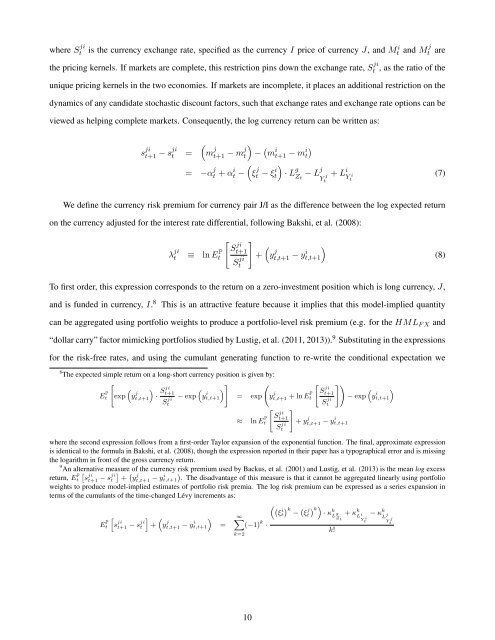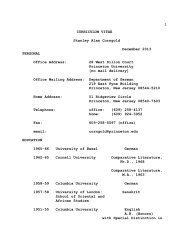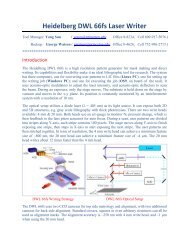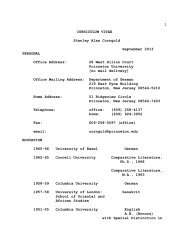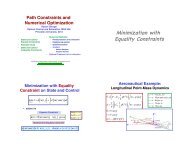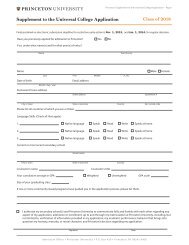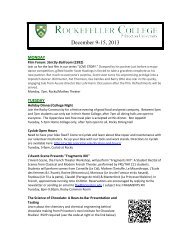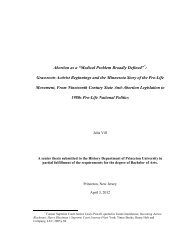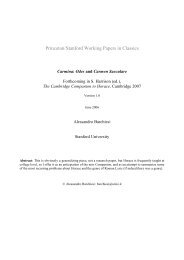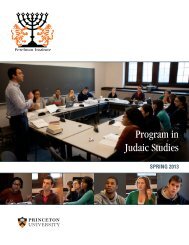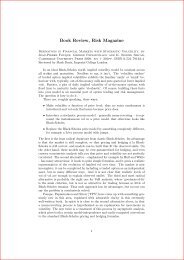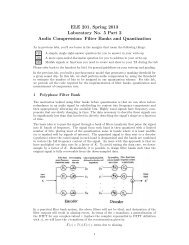Option-Implied Currency Risk Premia - Princeton University
Option-Implied Currency Risk Premia - Princeton University
Option-Implied Currency Risk Premia - Princeton University
You also want an ePaper? Increase the reach of your titles
YUMPU automatically turns print PDFs into web optimized ePapers that Google loves.
where S ji<br />
t is the currency exchange rate, specified as the currency I price of currency J, and M i t and M j t are<br />
the pricing kernels. If markets are complete, this restriction pins down the exchange rate, S ji<br />
t , as the ratio of the<br />
unique pricing kernels in the two economies. If markets are incomplete, it places an additional restriction on the<br />
dynamics of any candidate stochastic discount factors, such that exchange rates and exchange rate options can be<br />
viewed as helping complete markets. Consequently, the log currency return can be written as:<br />
s ji<br />
t+1 − sji t =<br />
( )<br />
m j t+1 − mj t<br />
= −α j t + αi t −<br />
− ( m i t+1 − m i )<br />
t<br />
(<br />
ξ j t − ξi t<br />
)<br />
· L g Z t<br />
− L j + L i Y j Y i<br />
t t<br />
(7)<br />
We define the currency risk premium for currency pair J/I as the difference between the log expected return<br />
on the currency adjusted for the interest rate differential, following Bakshi, et al. (2008):<br />
λ ji<br />
t ≡ ln E P t<br />
[ ]<br />
S<br />
ji (<br />
)<br />
t+1<br />
S ji + y j t,t+1 − yi t,t+1<br />
t<br />
(8)<br />
To first order, this expression corresponds to the return on a zero-investment position which is long currency, J,<br />
and is funded in currency, I. 8<br />
This is an attractive feature because it implies that this model-implied quantity<br />
can be aggregated using portfolio weights to produce a portfolio-level risk premium (e.g. for the HML F X and<br />
“dollar carry” factor mimicking portfolios studied by Lustig, et al. (2011, 2013)). 9 Substituting in the expressions<br />
for the risk-free rates, and using the cumulant generating function to re-write the conditional expectation we<br />
8 The expected simple return on a long-short currency position is given by:<br />
E P t<br />
[<br />
exp<br />
( )<br />
y j t,t+1<br />
(<br />
· Sji t+1<br />
− exp yt,t+1) ] (<br />
i = exp y j<br />
S ji<br />
t,t+1 + ln Et<br />
P<br />
t<br />
≈<br />
ln E P t<br />
[ ]<br />
S<br />
ji<br />
t+1<br />
+ y j<br />
S ji t,t+1 − yt,t+1<br />
i<br />
t<br />
[ ])<br />
S<br />
ji<br />
( )<br />
t+1<br />
− exp y i<br />
S ji<br />
t,t+1<br />
t<br />
where the second expression follows from a first-order Taylor expansion of the exponential function. The final, approximate expression<br />
is identical to the formula in Bakshi, et al. (2008), though the expression reported in their paper has a typographical error and is missing<br />
the logarithm in front of the gross currency return.<br />
9 An alternative<br />
[<br />
measure of the currency risk premium used by Backus, et al. (2001) and Lustig, et al. (2013) is the mean log excess<br />
return, Et<br />
P s<br />
ji<br />
t+1 − ] ( sji t + y<br />
j<br />
t,t+1 − t,t+1) yi . The disadvantage of this measure is that it cannot be aggregated linearly using portfolio<br />
weights to produce model-implied estimates of portfolio risk premia. The log risk premium can be expressed as a series expansion in<br />
terms of the cumulants of the time-changed Lévy increments as:<br />
E P t<br />
[ ] (<br />
)<br />
s ji<br />
t+1 − s ji<br />
t + y j t,t+1 − yt,t+1<br />
i<br />
=<br />
∞∑<br />
(−1) k ·<br />
k=2<br />
( (ξ )<br />
i k ( )<br />
t − ξ<br />
j k<br />
)<br />
t · κ k L g + κ k<br />
Z L i t Y<br />
t<br />
i<br />
k!<br />
− κ k L j Y j t<br />
10


